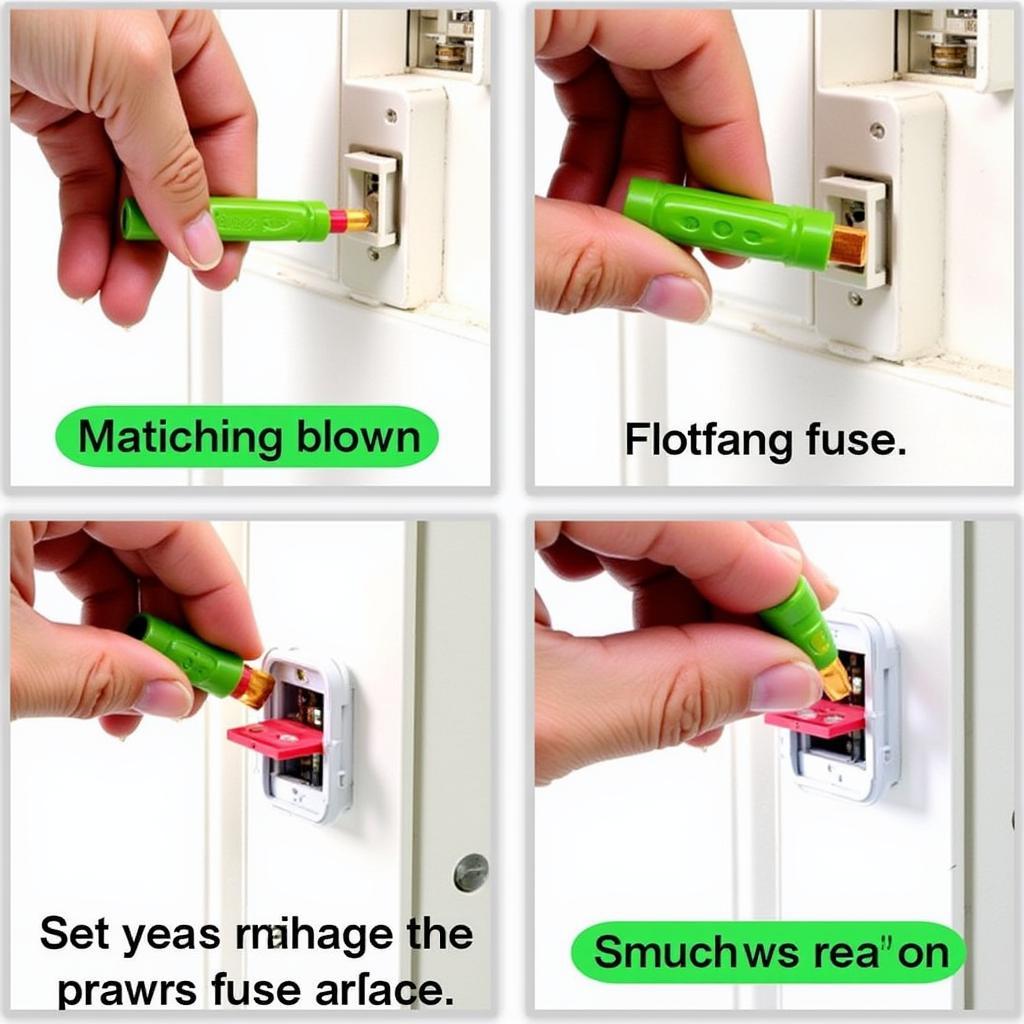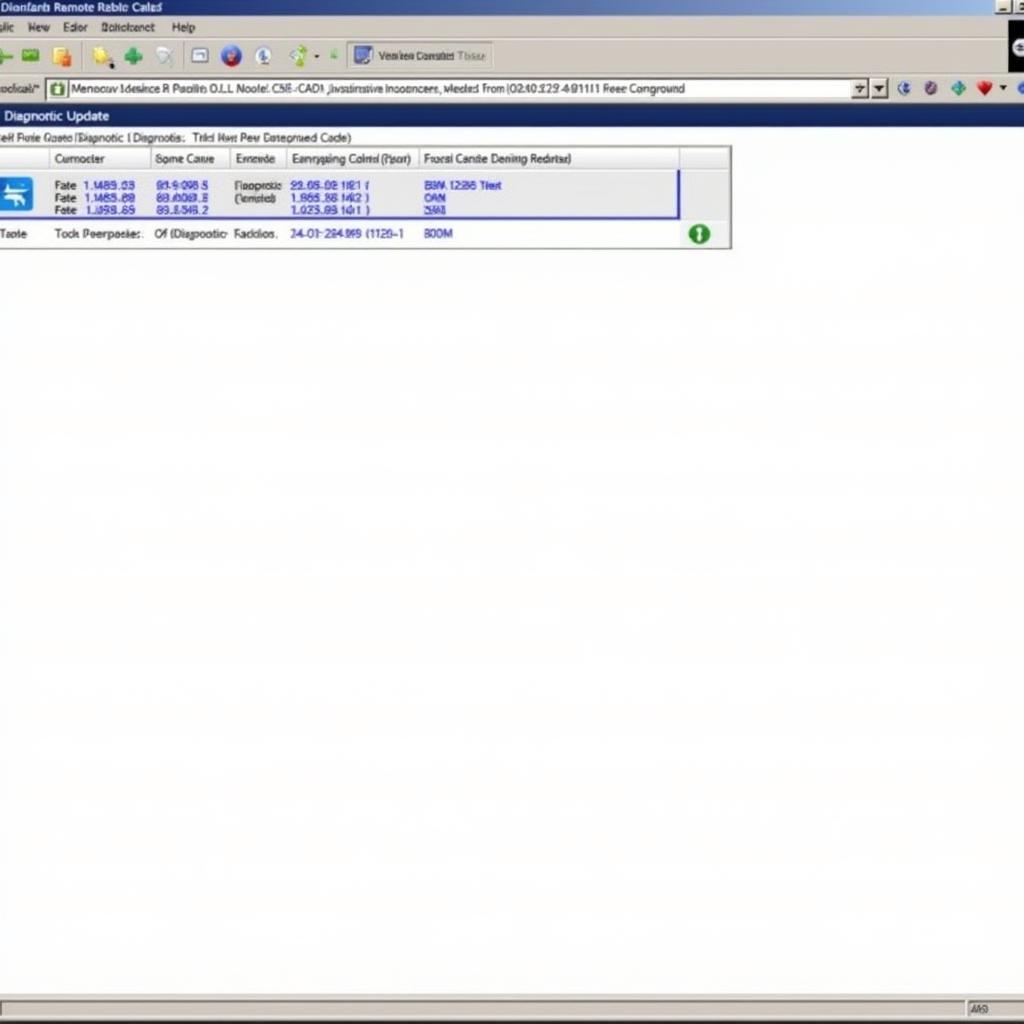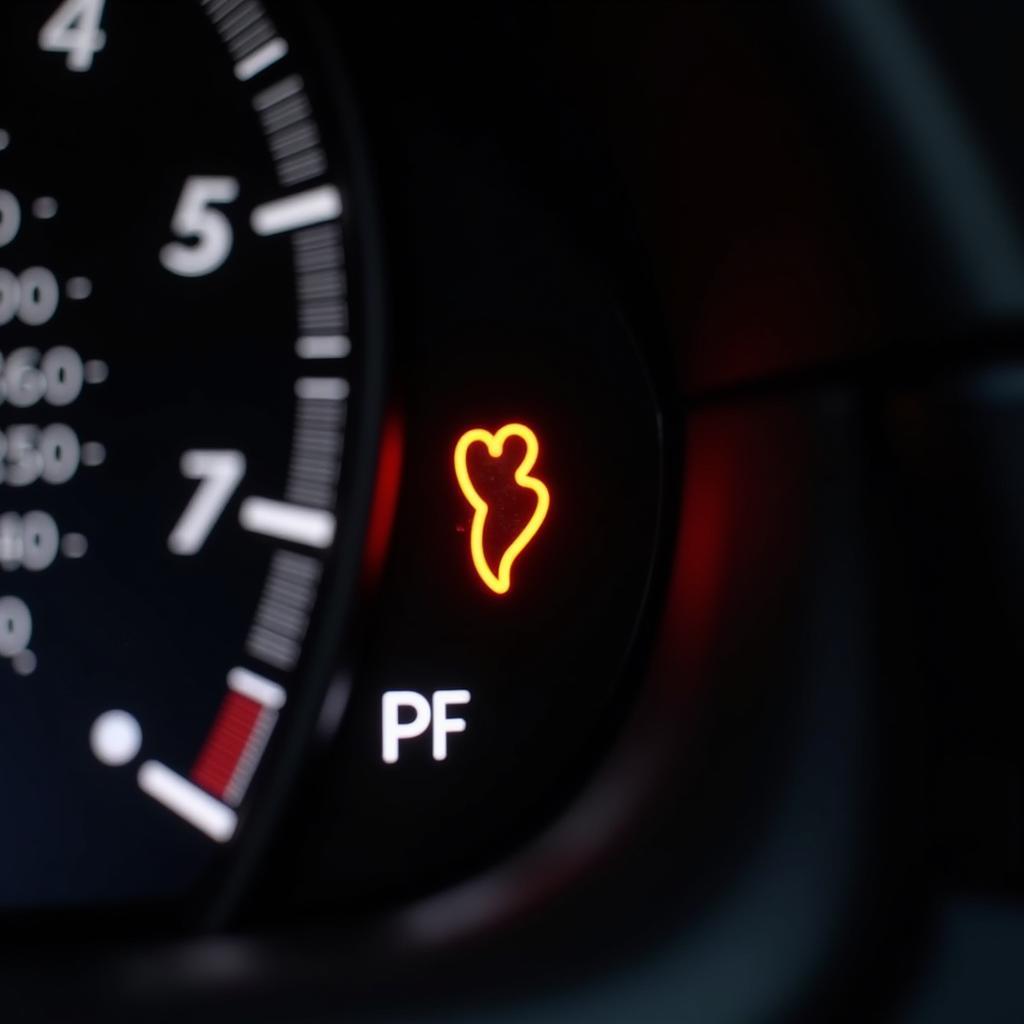A blown fuse can trigger your brake warning light, leaving you wondering what’s wrong. This comprehensive guide explores the link between a blown fuse and brake warning lights, providing troubleshooting tips, diagnostic strategies, and remote software solutions to get you back on the road safely. Read on to understand this common automotive issue and discover effective solutions.
If your brake warning light is on, it could signify a blown fuse. A blown fuse can disrupt the brake light circuit, activating the warning light. Check your owner’s manual to locate the specific fuse related to your brake lights.
This issue highlights the interconnectedness of your vehicle’s electrical system. A seemingly simple problem like a blown fuse can have significant repercussions. For more information on brake light issues, see our guide on the 201Toyota Avalon brake light warning.
Understanding the Brake Warning Light
The brake warning light is a crucial safety feature designed to alert you to potential problems within your braking system. It can illuminate for several reasons, including low brake fluid, worn brake pads, or, as we are focusing on here, a blown fuse. Ignoring this warning light can lead to dangerous driving conditions and costly repairs.
Why Does a Blown Fuse Affect the Brake Warning Light?
Your car’s brake lights and warning light often share a circuit protected by a fuse. When this fuse blows, the circuit is broken, interrupting power to the components it protects, including the brake lights and the warning system. This disruption triggers the brake warning light on your dashboard, even if there isn’t a direct problem with your brakes themselves. This can be particularly perplexing for drivers, as the brakes may appear to be functioning normally.
Diagnosing a Blown Fuse
Checking for a blown fuse is a straightforward process. Locate your vehicle’s fuse box (usually under the dashboard or in the engine compartment). Consult your owner’s manual for the specific fuse related to your brake lights. Remove the suspect fuse and inspect it visually. A blown fuse will have a broken filament. If you’re unsure, you can test it with a multimeter. You can also learn about warning lights in older models, like the parking brake warning light Chevy Astro 2004.
How to Replace a Blown Fuse
Replacing a blown fuse is a simple task. Once you’ve located the blown fuse, replace it with a new one of the same amperage rating. Never use a higher amperage fuse, as this can create a fire hazard.
 Replacing a Blown Fuse Correctly
Replacing a Blown Fuse Correctly
Beyond the Fuse: Other Potential Issues
While a blown fuse is a common cause, the brake warning light can also be triggered by other problems, including a faulty brake light switch, low brake fluid, or issues with the ABS system. If replacing the fuse doesn’t resolve the issue, further diagnostics are necessary. Check out our article on the brake light warning switch for more details on this critical component.
Remote Diagnostics and Software Solutions
Modern vehicles utilize sophisticated software that can be remotely accessed and programmed to diagnose and rectify certain issues. If a software glitch is causing the brake warning light to illuminate, remote software updates or recalibrations can be performed.
“Remote diagnostics are becoming increasingly important in the automotive industry,” says John Smith, Senior Automotive Electrical Engineer at Car Diagnostics Inc. “They offer a fast and efficient way to address software-related problems without requiring a physical visit to a repair shop.”
 Remote Diagnostics Software Interface
Remote Diagnostics Software Interface
Preventing Blown Fuses
Preventing blown fuses involves understanding the underlying causes. Overloading a circuit, short circuits, or faulty wiring can all lead to a blown fuse. Regular vehicle maintenance and inspections can help identify and address these issues before they cause problems. You might also find our resource on the 91 accord brake lamp warning light helpful.
Conclusion
A blown fuse is a common culprit behind a glowing brake warning light. By understanding the connection between these two and following the diagnostic steps outlined above, you can often resolve the issue quickly. However, if the problem persists, seeking professional help is crucial to ensure your safety and prevent further damage to your vehicle. Remember, a properly functioning braking system is paramount to safe driving.
FAQs
- Can I drive with a blown fuse that’s causing the brake warning light? While your brakes might still function, it’s not recommended to drive with a blown fuse affecting the brake warning light. This could indicate other electrical issues or affect other crucial safety systems.
- How often should I check my car’s fuses? Regular vehicle maintenance should include a visual inspection of the fuses. If you suspect a problem, check them immediately.
- Are all brake warning lights related to fuses? No, various issues can trigger the brake warning light. A blown fuse is just one possibility.
- What if I replace the fuse, and it blows again immediately? This indicates a deeper electrical problem, such as a short circuit, which requires professional diagnosis.
- Can I use any type of fuse to replace a blown one? No, always use the correct amperage rating specified in your owner’s manual.
- What are some signs of a failing brake light switch? Symptoms include brake lights staying on, not coming on, or coming on intermittently. The brake warning light might also be activated.
- How can remote diagnostics save me time and money? Remote diagnostics can quickly pinpoint software issues, eliminating the need for potentially unnecessary and costly physical inspections. “With remote software solutions, many issues can be resolved quickly and efficiently, saving drivers valuable time and money,” adds Sarah Jones, Lead Software Engineer at AutoTech Solutions. The vehicle anti-collision taillight brake warning lamp is another important safety feature to be aware of.


